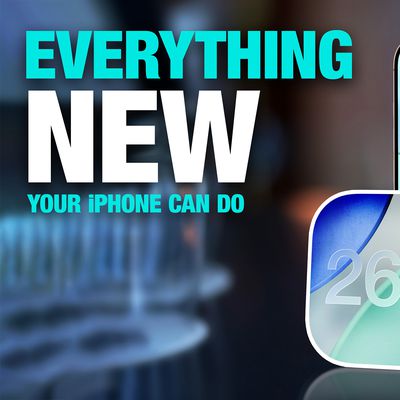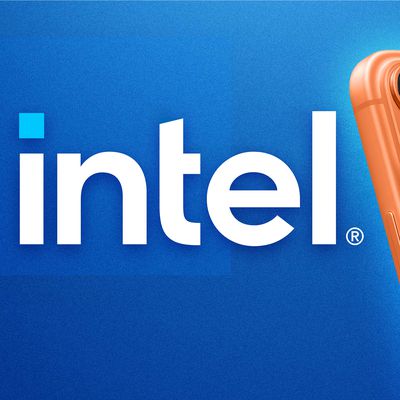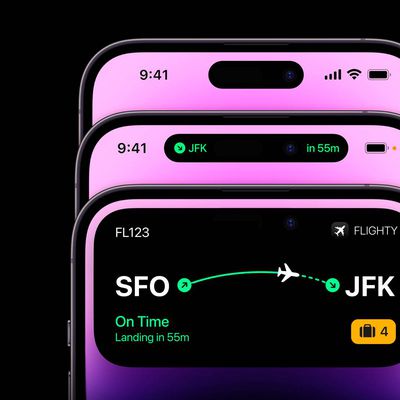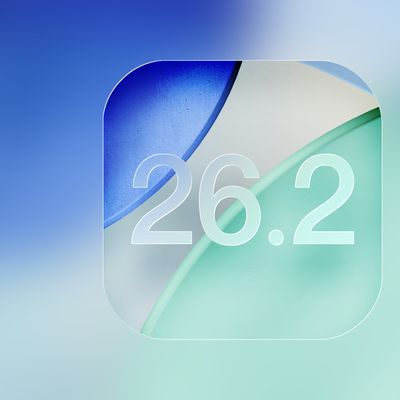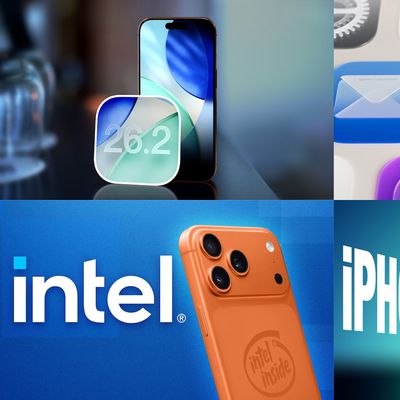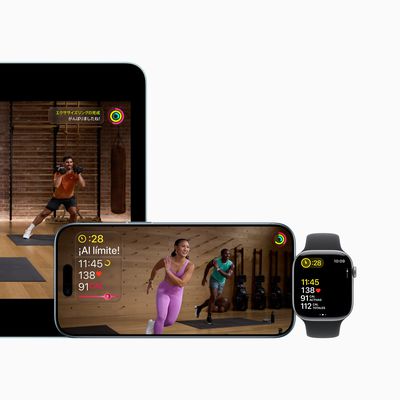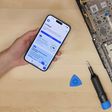Looking Back on Five Years of Apple Watch
Today marks the fifth anniversary of the Apple Watch launching on April 24, 2015. To mark the occasion, below we reflect on some of the key features added to the Apple Watch over the last five years.
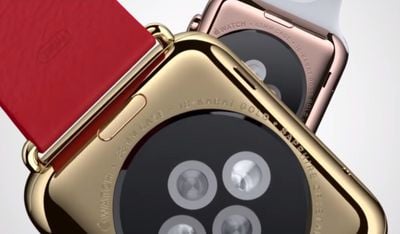
- 2015: The original Apple Watch was quite slow and relied heavily on a paired iPhone, but it laid the foundation for the future of the device. Available in 38mm and 42mm sizes, the original Apple Watch introduced everything from the Digital Crown scroll wheel to Activity rings. The original lineup included the since-discontinued 18-karat gold Apple Watch Edition, priced up to $17,000.
- 2016: Equipped with a dual-core S2 chip, the Apple Watch Series 2 was up to 50 percent faster than the original Apple Watch. Other new features included a built-in GPS, water resistance up to 50 meters for swimming, and a two times brighter display. Apple also introduced a Series 1 model that was essentially the original Apple Watch with an S2 chip.
- 2017: Series 3 marked a major step forward for the Apple Watch with LTE cellular connectivity on select models, allowing for users to make phone calls, send messages, stream Apple Music, and more without needing an iPhone nearby. Series 3 models also featured an up to 70 percent faster S3 chip, a barometric altimeter for measuring elevation, and a W2 chip that made Wi-Fi up to 85 percent faster and up to 50 percent more power efficient.
- 2018: Series 4 marked the arrival of two major health and safety features in Fall Detection and the ECG app. Apple also increased the casing sizes and shrunk down the bezels around the display, resulting in larger 40mm and 44mm options. And with the 64-bit S4 chip, performance became up to two times faster.
- 2019: Apple Watch Series 5 was a relatively iterative refresh, with new features including an always-on display, a built-in compass, 32GB of internal storage, and international emergency calling on cellular models.
Looking ahead, rumors suggest that Apple Watch Series 6 models will feature sleep tracking, blood oxygen level monitoring, faster performance and Wi-Fi connectivity, further improvements to water resistance, and possibly even a form of Touch ID.
Popular Stories
Apple is about to release iOS 26.2, the second major point update for iPhones since iOS 26 was rolled out in September, and there are at least 15 notable changes and improvements worth checking out. We've rounded them up below.
Apple is expected to roll out iOS 26.2 to compatible devices sometime between December 8 and December 16. When the update drops, you can check Apple's servers for the ...
Intel is expected to begin supplying some Mac and iPad chips in a few years, and the latest rumor claims the partnership might extend to the iPhone.
In a research note with investment firm GF Securities this week, obtained by MacRumors, analyst Jeff Pu said he and his colleagues "now expect" Intel to reach a supply deal with Apple for at least some non-pro iPhone chips starting in 2028....
Apple is actively testing under-screen Face ID for next year's iPhone 18 Pro models using a special "spliced micro-transparent glass" window built into the display, claims a Chinese leaker.
According to "Smart Pikachu," a Weibo account that has previously shared accurate supply-chain details on Chinese Android hardware, Apple is testing the special glass as a way to let the TrueDepth...
Apple today seeded the second release candidate version of iOS 26.2 to developers and public beta testers, with the software coming one week after Apple seeded the first RC. The release candidate represents the final version iOS 26.2 that will be provided to the public if no further bugs are found.
Registered developers and public beta testers can download the betas from the Settings app on...
Apple's iPhone development roadmap runs several years into the future and the company is continually working with suppliers on several successive iPhone models at the same time, which is why we often get rumored features months ahead of launch. The iPhone 18 series is no different, and we already have a good idea of what to expect for the iPhone 18 Pro and iPhone 18 Pro Max.
One thing worth...
Apple's chipmaking chief Johny Srouji has reportedly indicated that he plans to continue working for the company for the foreseeable future.
"I love my team, and I love my job at Apple, and I don't plan on leaving anytime soon," said Srouji, in a memo obtained by Bloomberg's Mark Gurman.
Here is Srouji's full memo, as shared by Bloomberg:I know you've been reading all kind of rumors and...
Apple's senior vice president of hardware technologies Johny Srouji could be the next leading executive to leave the company amid an alarming exodus of leading employees, Bloomberg's Mark Gurman reports.
Srouji apparently recently told CEO Tim Cook that he is "seriously considering leaving" in the near future. He intends to join another company if he departs. Srouji leads Apple's chip design ...
You'd expect things to be starting to wind down for the holidays by now, but that doesn't seem to be the case yet in the world of Apple news, with Apple just about ready to release iOS 26.2 and other operating system updates to the public.
There was also a flurry of news this week about Apple executive departures, some expected and some not so expected, while we also learned that Apple and...
Apple today announced that Fitness+ is expanding to 28 new markets on December 15 in the service's largest international rollout since launch, accompanied by new language dubbing and a K-Pop music genre.
Apple Fitness+ will become available in Chile, Hong Kong, India, the Netherlands, Singapore, Taiwan, and additional regions on December 15, with Japan scheduled to follow early next year....
Apple and Google are teaming up to make it easier for users to switch between iPhone and Android smartphones, according to 9to5Google. There is a new Android Canary build available today that simplifies data transfer between two smartphones, and Apple is going to implement the functionality in an upcoming iOS 26 beta.
Apple already has a Move to iOS app for transferring data from an Android...



